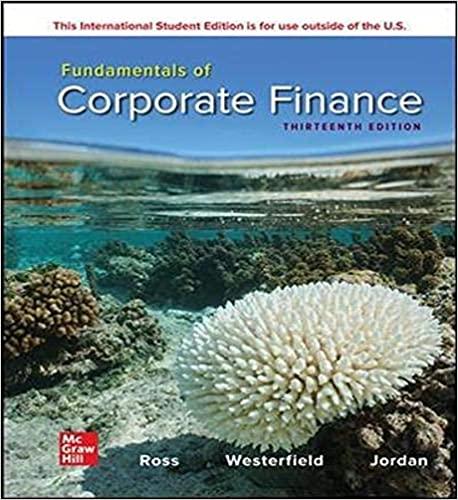Question
Question 2: Exchange Rate Risk Management As the CFO of BC-WaterBuffaloes you must manage the exchange risk embedded in the new, and raising, exports into
Question 2: Exchange Rate Risk Management
As the CFO of BC-WaterBuffaloes you must manage the exchange risk embedded in the
new, and raising, exports into the Euro-Zone. Now, you know that the demand for your
products will remain solid during the next two years, therefore, the only risk to manage
is the EUR/CAD exchange rate risk.
BC-WaterBuffaloes revenues in the EUR market are expected to be 84M EUR in the first
year, and 64M EUR in the second year. These revenues will be collected during each year
(84M EUR between now and 1-year) and accumulated, so the company will trade once in
currency exchange market, at the end of each year.
In a meeting with BC-Bank, they offered two options to eliminate the potential risk
exposure for the two-year horizon:
I. Contract the 1 and 2 forward rates without cost today and exchange the year revenues
generated in the Euro-Zone at the end of each year. The current available forward rates
are 1.45 EUR/CAD for the 1-year maturity, and 1.47 EUR/ CAD for the 2-year maturity.
II. Contract the 1 and 2-year maturity European-puts, to sell EUR and get CAD, with the strike
1.42 EUR/CAD, for both. The options' prices are 8 CAD per EUR contracted in the 1-year
option, and 9 CAD per EUR contracted in the 2-year option.
From your analysts, you got the following calibrated binomial tree:
Exhibit B: EUR/CAD 2-year Binomial Tree
1.88
1.63
1.42 1.42
1.24
1.08
For this binomial tree, the time step is 1-year, the risk-neutral probability of an increase
in the spot exchange rate is 52% for the EUR/CAD future market. For simplicity, assume
that the relevant rate risk-free rate for cashflows in CAD is 1.6% for 1 and 2-year maturity.
BUS 418 - International Financial Management
4
a) If you contract the forward strategy, at which rate you'll trade the revenues? Is the
tree useful at this point?
b) Compute the present value of the revenues in CAD using the strategy I. Use the
provided CAD risk-free discount rate.
c) Using the binomial tree, estimate the present value of strategy II.
i) Identify on which nodes of the tree the options will be exercise (remember, you
have two European options, each maturing at the end of each year).
ii) Compute the value in CAD of the converted revenues in in each node
iii) Using the risk-neutral probability and the CAD risk-free discount rate, estimate the
present value of the cash flows.
iv) Compute the net present value of the strategy II (include the payment of the cost
of each option)
d) Which of the two hedge strategies is the best? Comment on the financial reasons for
this result.
Step by Step Solution
There are 3 Steps involved in it
Step: 1

Get Instant Access to Expert-Tailored Solutions
See step-by-step solutions with expert insights and AI powered tools for academic success
Step: 2

Step: 3

Ace Your Homework with AI
Get the answers you need in no time with our AI-driven, step-by-step assistance
Get Started


